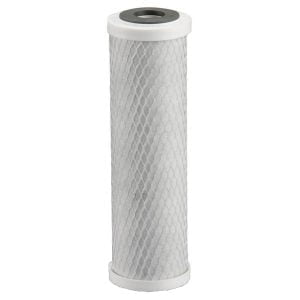The first step to Water Treatment is to find out what kind of water we are dealing with. This will make the treatment more effective, and not cost prohibitive. A water analysis will tell us what is in the water we drink.
 While chlorine is effective in helping to kill most harmful bacteria, and is generally the prescribed remedy to “unknown water” it can remove our sense of smell which greatly effects our ability to taste.
While chlorine is effective in helping to kill most harmful bacteria, and is generally the prescribed remedy to “unknown water” it can remove our sense of smell which greatly effects our ability to taste.
This is why it is important to do the research on the water we drink. Obtaining a proper conclusion of what we are dealing with is very important to preserving our health and saving resources.
There are great alternatives to – “water that flows from the tap”. As the best alternative people choose Reverse Osmosis System for drinking and cooking.
Reverse Osmosis systems work by carbon filter. Carbon filters do not remove all bacteria, but do remove the taste and odor of the water, leaving it looking clean. The small amount of bacteria that may pass through the filter has been proven safe to drink.
A Carbon Filter is made of many fibers of carbon woven together to create surface area, yet allow water to still pass through. When Chemicals are in the water, they attach to the fiber of the filter.
When a Carbon filter becomes burdened down it will let over-burden back into the water. Keeping clean filters is very important for your good health.
Often people will complain that their Reverse Osmosis System is not working anymore. They do not realize the load being placed upon it, which often is far more than anticipated. Carbon Filters should be replaced on time to assure the health of those who drink water treated by them.
When a filter works by sand and gravel, whether it is treating water from a well, or any other source it is working mechanically.
Rivers purify water by this means. Springs which are pure are coming from water that is passing through great amounts of sand and gravel.
Water coming from hard surfaces, especially in the sun-light is hard water. The water is distilled into the air while the minerals remain.
Mechanical filters have been effective for removing large and small particles, and have effectively removed radon. Mechanical filters are generally first in water treatment. After the water is clean for the eye, a carbon filter will remove the remaining impurities, provided the filters are replaced as needed.
You will find large mechanical filters near the mainline of a home or well. While simple small carbon filters are located under a kitchen sink.
Heavy metals, bacteria, or nitrate are not removed by mechanical filter or Activated Carbon filters.
When a whole house water treatment system fails it is generally at the point the water enters the domicile. These systems generally are protecting people from radon found in well water.
If you have alternative filtering systems, maintain a schedule for replacing filters. If you are ever in doubt replace the filters. Having a schedule for periodic testing of the water is also very important.
However, there are more filters that can be added to a filtration system in order to improve your drinking and cooking water quality. For this reason we have to know first what kind of water you have to treat in order to meed the highest standard.
[1-click-image-ranker]
- How do you use SodaStream Duo – Step by Step Guide? - February 6, 2024
- Why Choose Tankless Systems? Discover the Best Tankless Reverse Osmosis Systems in Cyprus - December 18, 2023
- Comparison of Chlorine vs Chlorine Dioxide: Which is the Superior Sanitizer? - June 25, 2023
